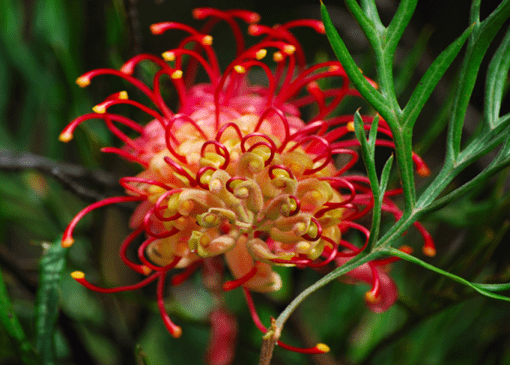Why Study this Australian Natives B Course?
Interested in Australian native plants? Do you want to deepen your skills and knowledge in Australian native plants? This Australian Natives B Course Online tackles exactly those and more! This course will teach you the conditions of growing different types of Australian natives, how to maintain their health, how to use Australian native plants for commercial purposes, and much more.
Learn to identify and grow Australian Wildflowers and Shrubs. Be surprised how many of these stunning and unique plants can be cultivated successfully as far afield as the UK, the Middle East and North America. While this course is designed to follow on from Australian Natives I, it may be taken by itself if your focus is on smaller growing natives (eg. wildflowers, clumping plants, etc).
This Australian Natives B Course is a perfect pair for those who have already taken Australian Natives A (Introduction) Course Online. This course may also be taken standalone, and is suited for those who are looking to deepen their understanding in Australian native plants.
Course Aims:
- Distinguish between different types of native wildflowers.
- Determine reliable information about the identification and culture of Australian wildflowers.
- Specify general cultural practices, including propagation, for different families of Australian native wildflowers.
- Explain the characteristics, including identification and culture, of heath like native wildflowers; with reference to both proteaceous and myrtaceous plants.
- Explain the characteristics, including their identification, culture and use, of wildflowers in the Asteraceae (ie. Daisy) family.
- Explain the characteristics, including identification, culture and use, of different legume wildflower genera.
- Explain the characteristics, including identification, culture and use, of different Australian native monocotyledons (ie. narrow-leaved plants).
- Prepare a planting design featuring Australian wildflowers.
- Develop a cut flower production plan, for a selected Australian wildflower.
Lesson Structure
- Scope and Nature
- Review of the system of plant identification
- Resources, sources for further information contacts (i.e.: nurseries, seed, clubs, etc.)
- Plant Relationships
- Understanding Environmental Zones across Australia
- Soils; composition, colloids, peds, texture, chemical properties, pH and nutrient availability
- Improving Soils
- Natives on Low Fertility Soils
- Diagnosis of Nutritional Problems
- Inspecting Plants and diagnosing health issues
- Preventing Problems
- Pests and Diseases on Natives
- Planting, staking, mulching, watering
- Planting; different techniques for plant establishment
- Pruning Australian Native Plants
- Water Management -review
- Propagation Technique – review
- Scope and Nature of Heaths
- Heath habitats
- Epacridaceae; the Epacris Family
- Proteaceae, Myrtaceae, Thymeleaceae, Dilleniaceae
- Glossary of botanical terms used to describe plants
- Introductory Plant Morphology
- Review of plant genera and many of their species:
- Grevillea
- Hakea
- Hibbertia
- Hypocalymma
- Isopogon
- Leptospermum
- Melaleuca
- Micromyrtus
- Pimelia
- Richea
- Telopea
- Thryptomene
- Verticordia
- Acronidium
- Characteristics of Asteraceae
- Floral Structure of Asteraceae
- Review of culture and distinguishing characteristics of various Asteraceae genera, including:
- Heichrysum and Bracteantha
- Helipterum
- Olearia
- Orthronathus
- Rhodanthe
- Common characteristics of all legumes
- Distinguishing Fabaceae, Caesalpinacea and Mimosaceae
- Acacia
- Albizzia
- Eutaxia
- Goodia
- Hardenbergia
- Hovea
- Indigofera
- Kennedya
- Pultenea
- Alogyne
- Bauera
- Burseria
- Clematis
- Correa
- Crowea
- Dampiera
- Hibbertia
- Hibiscus
- Lobelia
- Leschenaultia
- Pandorea
- Pittosporum
- Pratia
- Prostanthera
- Rhagodia
- Sollya
- Viola
- Westringia, etc.
- Basic Landscape Design; Design Procedure, Drawing a plan
- Native Plants for Specific Situations; long flowering species, climbing species, etc
- Blandfordia
- Bulbine
- Caesia
- Calectasia
- Calostemma
- Carex
- Cordyline
- Dianella
- Lomandra
- Danthonia
- Patersonia
- Stypandra
- Anigozanthus
- Xanthorrhea, etc.
- Production Plan for Cut Flowers
- Selection Criteria for Plants
Enrol Now
- Experienced Tutor support
- Certificate sent to you
- Online study (Printed notes available)
- Self paced - no set timetable
- 12 months to complete course
From: $25.00 / week for 26 weeks
Get a Free Info Pack!









